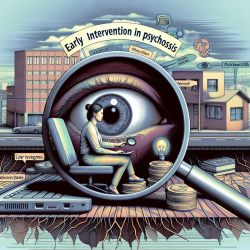Understanding Adolescent Sexting Through a Social-Ecological Lens
In the digital age, sexting has emerged as a common behavior among adolescents, often viewed as a normative part of their social interactions. However, the implications of sexting can range from benign to significantly problematic, especially when considering the legal, social, and emotional consequences. A recent study, "A Social-Ecological Approach to Understanding Adolescent Sexting Behavior," provides valuable insights into the factors influencing sexting among young people. This blog explores how practitioners can leverage these findings to foster better outcomes for adolescents.
The Social-Ecological Framework: A Comprehensive Perspective
The study utilizes Bronfenbrenner’s ecological systems framework, which posits that individual behaviors are influenced by multiple, interrelated systems. This approach considers factors at the individual, peer, family, and school levels. The research specifically examines active sexting (sending or requesting sexts) and passive sexting (receiving or being asked for sexts) in relation to these variables.
Key Findings and Their Implications
- School Connectedness: The study found that school connectedness is negatively associated with passive sexting. This suggests that interventions aimed at increasing students' sense of belonging and connection to their school could potentially reduce the frequency of unsolicited sexts. Practitioners should advocate for programs that enhance school connectedness as a preventative measure against risky behaviors.
- Parental Love and Support: A supportive family environment, characterized by love and encouragement, was linked to lower instances of both active and passive sexting. Practitioners can guide parents in fostering open communication and supportive relationships with their children, which may empower adolescents to make safer choices.
- Romantic and Peer Pressure: The study highlights that perceived romantic pressure has a significant impact on both active and passive sexting behaviors. Practitioners should focus on equipping adolescents with skills to manage and resist romantic and peer pressures effectively. This could include educational programs that teach assertiveness and healthy relationship dynamics.
Practical Applications for Practitioners
Practitioners working with adolescents can apply these findings by developing comprehensive strategies that address the various ecological factors influencing sexting behavior. Here are some actionable steps:
- Implement school-based programs that promote a positive school climate and student connectedness.
- Encourage parental involvement and provide resources for parents to build supportive and communicative relationships with their children.
- Develop workshops or counseling sessions that focus on building adolescents' resilience to peer and romantic pressures.
Encouraging Further Research
While the study provides valuable insights, it also opens avenues for further research. Practitioners are encouraged to explore additional factors that may influence sexting behaviors and to consider longitudinal studies that could provide deeper understanding of these dynamics over time.
To read the original research paper, please follow this link: A Social-Ecological Approach to Understanding Adolescent Sexting Behavior.










